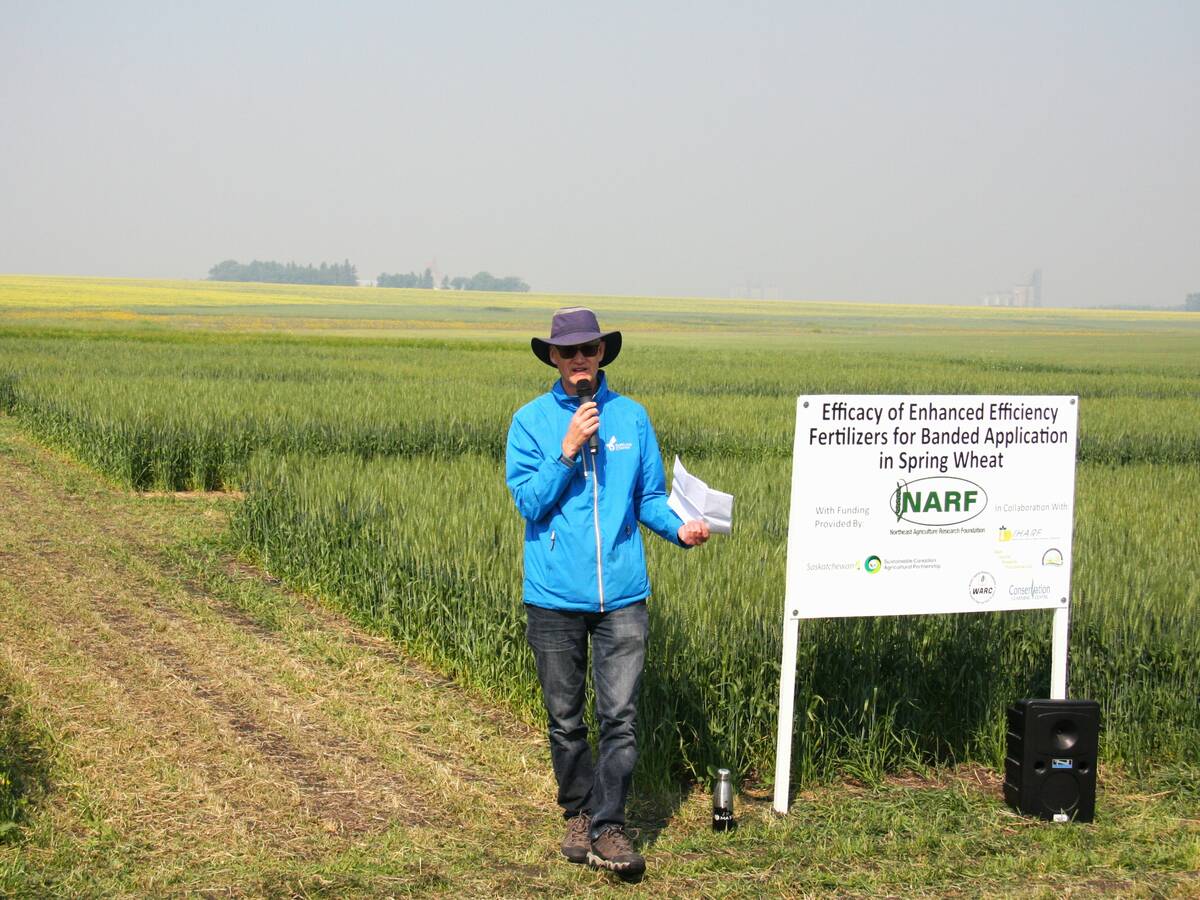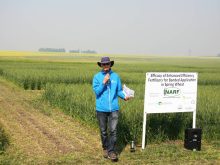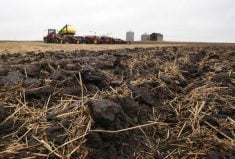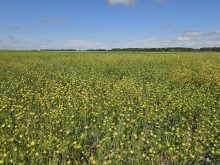Striped and crucifer: they are the two major species of flea beetles that feed on canola in Western Canada.
Crucifers were the dominant species in the 2000s, and Agriculture Canada research in Saskatoon showed that they represented 97 percent of the total flea beetle population.
That has since changed.
Striped flea beetles, once rare in the southern and eastern Prairies, are now commonplace in places such as southern Manitoba.
“These days we see an increasing abundance of striped flea beetle, everywhere on the Prairies,” said Tharshi Nagalingam, a post doctoral researcher in entomology at the University of Manitoba.
Read Also

Fertilizer method’s link to emissions studied
A researcher says others studying greenhouse gas emissions aren’t considering how the loss of nitrogen into the atmosphere correlates with fertilizer application or if there is an impact to yield.
“In Manitoba, in the study we have conducted from 2015 to 2018, we calculated around 50-50 crucifer and striped flea beetles.”
Entomologists have a few theories on why striped flea beetle populations have boomed and spread over the last decade:
- Insecticidal seed treatments, applied to canola seed, are less effective against striped flea beetles.
- Striped flea beetles emerge earlier in the spring than crucifers. Earlier seeding dates for canola tilt the population in favour of striped beetles.
Nagalingam has another hypothesis.
Striped flea beetles lay more eggs than crucifers, and they may reproduce more than once during the growing season.
“In some insects, hibernation is necessary to lay eggs and produce the next cycle,” Nagalingam said.
“For the striped flea beetles in our laboratory, (they) produced several generations without hibernation…. We suspect there might be two generations produced per year of striped flea beetles.”
The population shift toward striped flea beetles is more than just an academic curiosity.
Anionic chemistries thiamethoxam and clothianidin from Bayer are the most common tool to control flea beetles in canola crops. However, research suggests the insecticides aren’t as effective against striped beetles.
Consequently, growers are turning to cyantraniliprole, a relatively new chemistry branded as Lumiderm, to control striped flea beetles.
“We have products now that are finally in new modes of action,” said Greg Sekulic, a Canola Council of Canada agronomist and integrated pest management expert.
DuPont, which manufactures Lumiderm, is promoting the insecticidal seed treatment for early season control of cutworms in canola but also to control flea beetles.
Many growers are now planting canola seed that is coated with both Lumiderm and a neonic insecticide to keep crucifer and striped flea beetles in check.
Sekulic supports the decision because it’s comparable to tank mixing herbicides, which delays the development of herbicide resistant weeds.
“In order to maintain the efficacy in weed control, we definitely want to be tank-mixing modes of action,” he said.
“For insect management, (it’s) very much the same thing.”
Entomologists haven’t observed cases of flea beetle resistance to neonicotinoid insecticides in Canada, but there is evidence of resistance in other parts of the world.
“In northern Europe and England, a related species they have there, the cabbage stem flea beetle, they do have some documented resistance to the neonics and the synthetic pyrethroids they’re using as over-sprays … resulting in much higher rates of application and more frequent applications,” Sekulic said.


















